By Greg Oxley – editor of French socialist website La Riposte
Nobody can really say how the Israeli invasion of Gaza will pan out in the weeks and months ahead. Hamas cannot possibly win the war against a regional superpower such as Israel. But how long it will take the invaders to approach their avowed aim of the eradication of Hamas, and just how completely this can be done, is an open question.
But in any case, the question put by General Petraeus (see image below) is of crucial importance in relation to Gaza and will be one of the main factors in how the aftermath of this horrific conflict will unfold for decades to come.
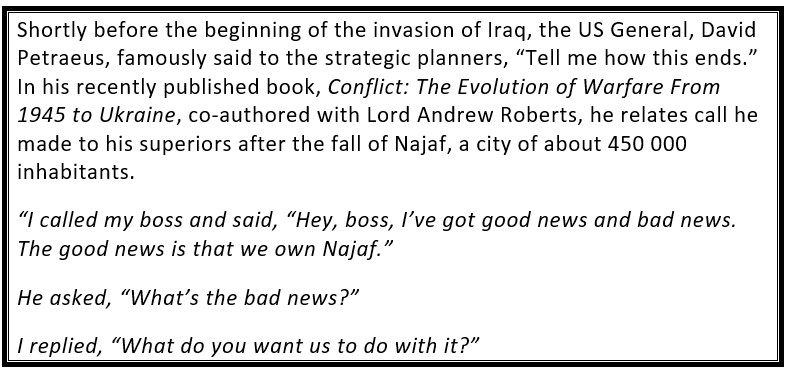
According to an article in the Financial Times (October 23rd, 2023), Yoav Gallant, the Israeli defence minister, told the Knesset that after the war, Israel would no longer accept any responsibility “for life in the Gaza Strip”. This probably means that the Netanyahu government is thinking in terms of a total and permanent blockade of Gaza, putting an end to even the relatively small pre-war numbers of inhabitants of the enclave to work in Israel, and will no longer allow supplies of electricity, fuel, and other essential commodities to cross the frontier. In a word, Israel plans to tighten its stranglehold on Gaza, which by that time will have been almost completely reduced to a mass of blood-soaked rubble as a result of the methods employed by Israel in the present invasion.
Is there a military solution?
And then what? Who will run Gaza after the war? Who will live there and how will they be supposed to survive? And can Hamas – or some similar force under another name – be definitively prevented from emerging in the future? Numerous participants and commentators of the discussions between the Biden administration and the Netanyahu government have reported that beyond sealing off Gaza from the rest of the world, Israel does not have a seriously thought-out “endgame” for this war. This raises a broader question in relation to the present conflict, namely, is there really a possible military solution to the Palestinian question, on either side?
The relatively small fighting force commanded by Hamas stands no chance whatsoever of defeating Israel militarily. Israeli society is highly militarised and equipped with the most sophisticated and deadly weapons of war in the world. The attack it launched on October 7th was a “success” only in the sense that it got through into Israeli territory, taking Israeli intelligence by surprise and exposing weaknesses in the initial Israeli military response. If we assume that the “war aim” of Hamas was to inflict as many casualties among Israeli civilians and military personnel as possible, to sow terror and draw Israel into open war, then the operational was indeed successful.
However, such “aims” were an essentially desperate and futile gamble bearing the stamp of fundamentalist fanaticism which will do nothing to resolve the Palestinian question. On the contrary, the suffering, destruction, and death the people of Gaza have reaped in response to this deadly but short-lived incursion has condemned them to a living hell. Furthermore, however long it takes, the Israeli response will deal a decisive blow to Hamas as a political and military force.
On the Israeli side, the Netanyahu government claims to be able to eradicate the threat of “terrorism” once and for all and seems to think that this is best done by a “blitzkrieg”, killing thousands upon thousands of civilians (half of whom have so far been children and babies), by indiscriminate bombing of refugee camps, homes and hospitals, by imposing mass starvation and reducing Gaza to a complete wasteland. Things will not be so simple.
In spite of the colossal imbalance in firepower in Israel’s favour, warfare in the dense urban environment of Gaza will mean clearing every building, every room of every floor, every basement, every tunnel, and each time leaving a holding force behind which is big enough to avoid being swarmed and dislodged by an insurgent enemy. Taking and securely holding Gaza will take weeks and possibly months of war.
US warships
If the war drags on, Israel could well find itself in a more difficult position than before it started. The presence of US warships in the Eastern Mediterranean is intended as a warning against Iran, which has so far held back from getting involved. The Lebanese Hezbollah, which represents a considerable fighting force, has carried out a few small-scale attacks. But this could change.
What the Israelis are doing in Gaza is having an enormous impact on the political consciousness of the masses throughout the Arabic-speaking world, in Turkey, in Iran and throughout the entire region; an impact comparable to the mass displacement, dispossession, and slaughter of the Palestinians in 1948, known as the Nakba. And this second Nakba is taking place in the modern world, where the affordances of information technology have linked hundreds of millions of people together and where communication in words and images is infinitely more graphic, immediate, and powerful than in 1948.
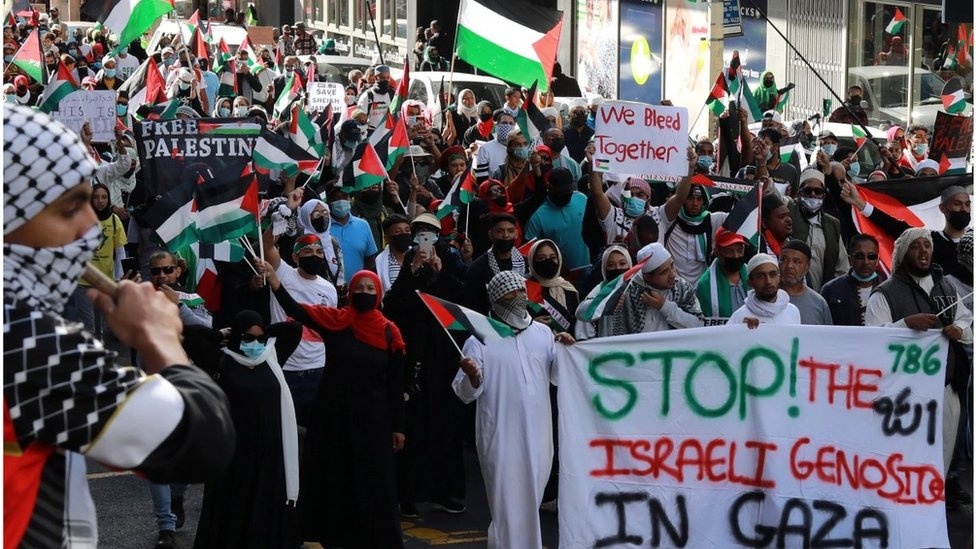
protests around the globe.
The war against Gaza could lead to destabilisation of the entire region. On the West Bank, the Israeli armed forces and the Palestinian Authority have contained the situation until now, but a large-scale revolt is still a possibility, as is a movement of Palestinian workers and youth within Israel. There are signs that the terrible suffering and death inflicted on the civilian population of Gaza may stir opposition among some Jewish workers and youth. This is particularly true in Haifa. In neighbouring countries such as Jordan and Egypt, growing opposition to the passivity of those in power is undermining their position.
Even if Israeli armed forces manage to establish complete control of Gaza relatively quickly, and even if regional instability is contained within certain limits, then comes the question raised by General Petraeus: What now? As has been said above, the Israeli government does not appear to have given any serious thought to this. It is not just a question of rebuilding the homes, schools and hospitals destroyed in the war, without which – and much more – it will be impossible to achieve anything remotely approaching civilised living conditions, and even that will be a monumental task.
Political power in Gaza
Then there is the question of political power within Gaza. Israel, which moved out of Gaza in 2005, has ruled out direct military occupation. Other ideas have been put forward from various quarters, internationally, but none of them appear to be viable. For instance, one suggested option is that the arrangement on the West Bank, where the Palestinian Authority works hand in hand with the Israeli army and secret services to maintain “order”, could be extended to Gaza. However, the population of Gaza generally considers the Abbas administration as a treacherous collaboration with Israeli oppression. Many of the Palestinians living under this administration are of the same opinion. The Palestinian Authority could only extend its role to Gaza on the backs of Israeli tanks.
Another idea is some sort of international administration, perhaps involving Egypt, Morocco, Saudi Arabia and some of the Gulf States. But the question will be asked as to where these “friends” of Gaza were when the people were being bombed and gunned down. Such an option would be seen by the masses, inside and outside Gaza, as a foreign occupation in league with Israel. It would have no standing with the people. Furthermore, it is one thing to cobble together some sort of international coalition to preside over “reconstruction”, the flow of international aid, and keeping the people in check. But how long for? And what could possibly replace it?
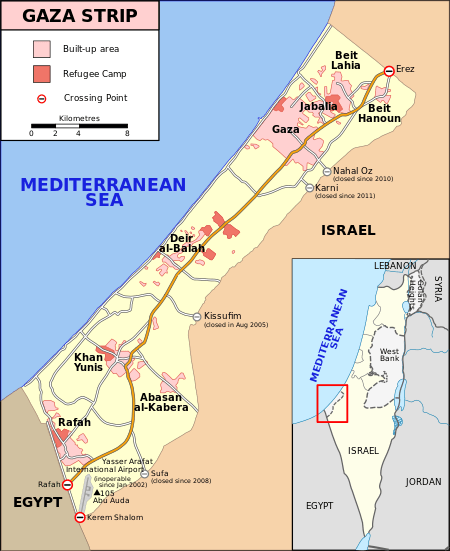
Whoever is eventually put in charge of Gaza will not only have to distribute humanitarian aid, restore social services and infrastructure, reopen markets, schools, and hospitals. It will also have to carry out hard-hitting counterinsurgency operations against remnants of Hamas and the Islamic Jihad. This will necessarily require major military, policing, and secret service capabilities. One way or another, Israel will have to be heavily involved in this. The Gaza problem will not go away. Clearly, for Israel, the elimination of Hamas will create at least as many problems as it solves. Netanyahu’s claim to be resolving the problem of Israeli security “once and for all” is a pipe dream.
Furthermore, for every Hamas combatant that is killed in this war, the mass displacement of this second Nakba and the overall toll of suffering and death inflicted upon the people of Gaza will produce ten more in their place. Many people in Gaza hate the Hamas dictatorship. Nonetheless Hamas has a basis of support. Ordering over a million people to move south will not separate Hamas from its supporters. Quite the opposite. Quite possibly Hamas is gaining rather than losing supporters at the present time, in Gaza and throughout the region.
Sabra and Shatila
A number of historical precedents show a similar process. In 1982, Israel invaded Southern Lebanon with almost 80,000 troops and 3,000 tanks and armoured vehicles. The aim was to smash the PLO bases in the country. While the operation in itself could be said to have been successful, in that the PLO in Lebanon was effectively chased out and neutralised, the invasion – and the mass murders carried out by the “Christian” Fascist militias, particularly in the refugee camps of Sabra and Chatila – created such seething hatred of Israel and her allies that Hezbollah developed massive support and grew into the powerful fighting force it is today. Indeed, Hezbollah effectively defeated the later Israeli invasion of Lebanon in 2006.
Another example of this phenomenon is the military occupation of Gaza by Israel from 1990 to 2005. The occupying force killed large numbers of Hamas terrorists and militants from other Palestinian groups. This gave rise to massive local support for Hamas, which won the elections after the Israeli withdrawal.
There is no possible military pathway to Palestinian self-determination and democracy – which means freedom from Israeli imperialist oppression but also from reactionary fundamentalist dictatorship under Hamas and the collaborationist stooges of the PLO leadership. The calls emanating from various “pro-Palestinian” groups in Western Europe for “armed struggle” are meaningless, pseudo-revolutionary phraseology and nothing more.
The only way to bring the advent of a democratic Palestinian homeland any closer would be on the basis of a political platform of social and political reform, directed against Israeli imperialism and also against the reactionary regimes in the surrounding Arab states and in Iran. The Palestinian workers and youth need a programme which can win “the hearts and minds” of the Israeli working class, and vice versa, a programme of peaceful coexistence and cooperation, which is inconceivable unless it is linked to the abolition of capitalism and the overthrow of the ruling classes.
This may seem like a remote prospect at the present time, amid the flames and death of an ongoing war. But it is nonetheless the truth. The ruling classes have brought only exploitation, cruelty, and death to the peoples of the Middle East. They must be overthrown. Socialism and internationalism are the only way forward.

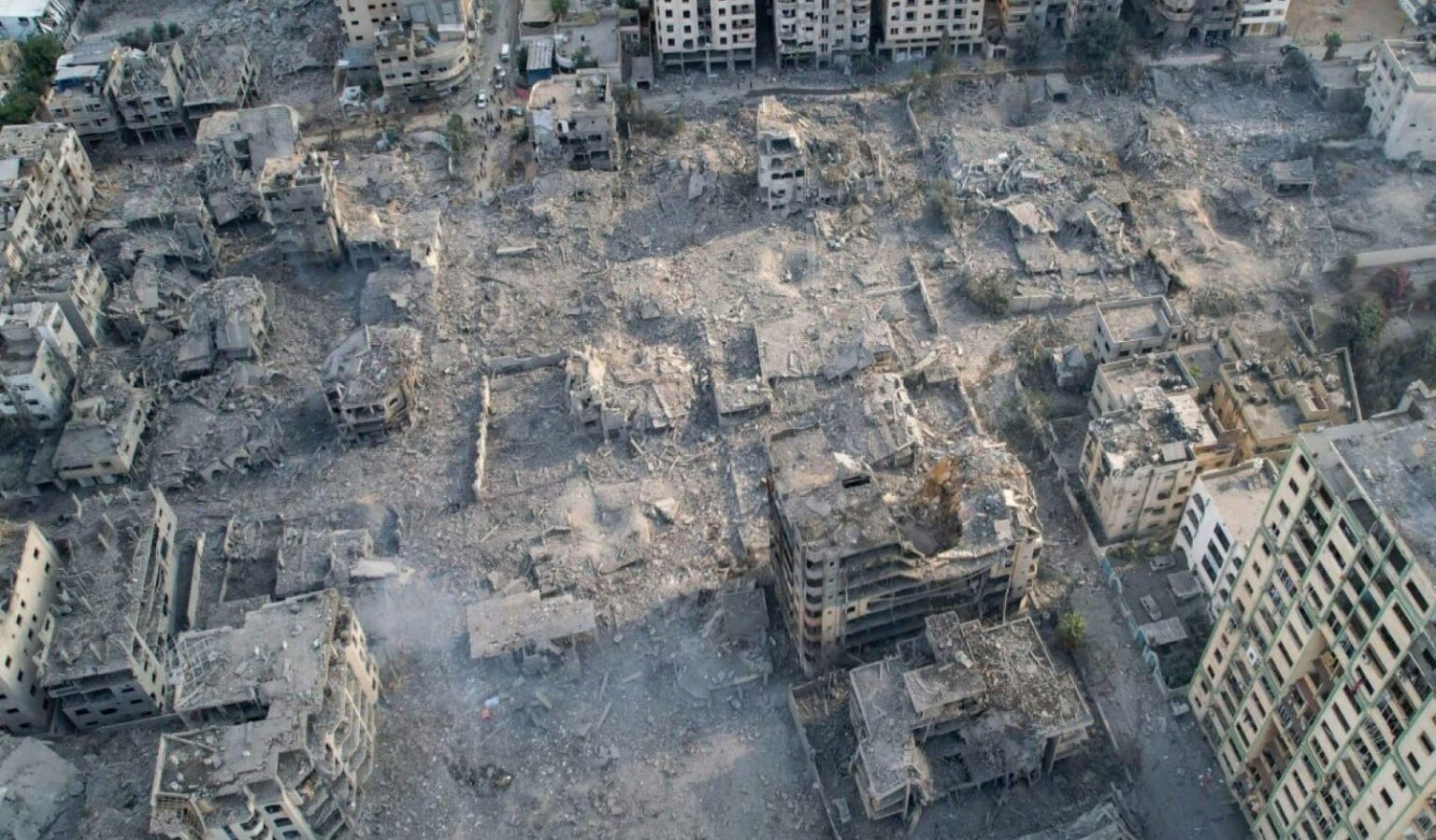

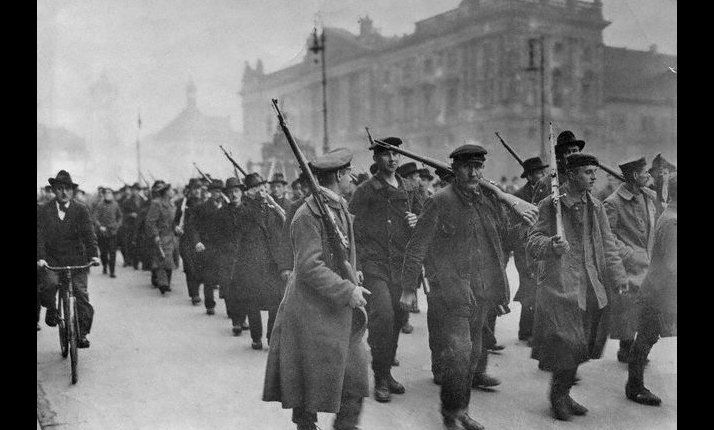
The endgame appears to be to make Gaza unliveable, and/or to drive the Palestinian population out of the enclave. Israel apologists keep focusing on the demographic aspect – “In 1967 350,000 lived in Gaza, now it’s 2 million”. If they can remove the 2 million from the equation the racial balance (which is how they look at it) in Israel/Palestine begins to look a lot different.